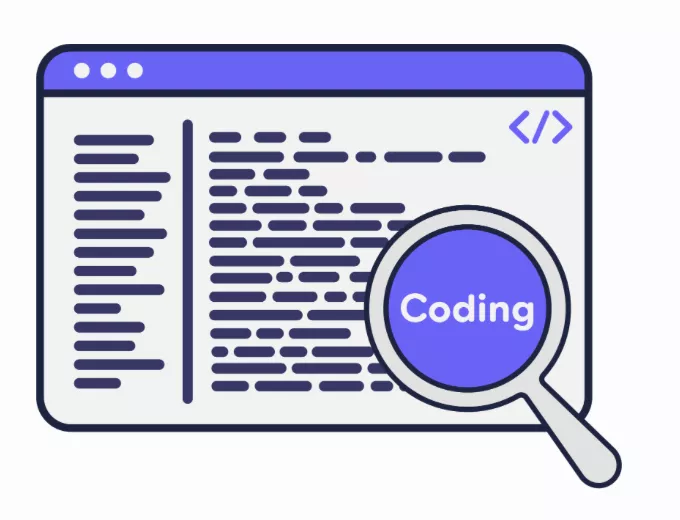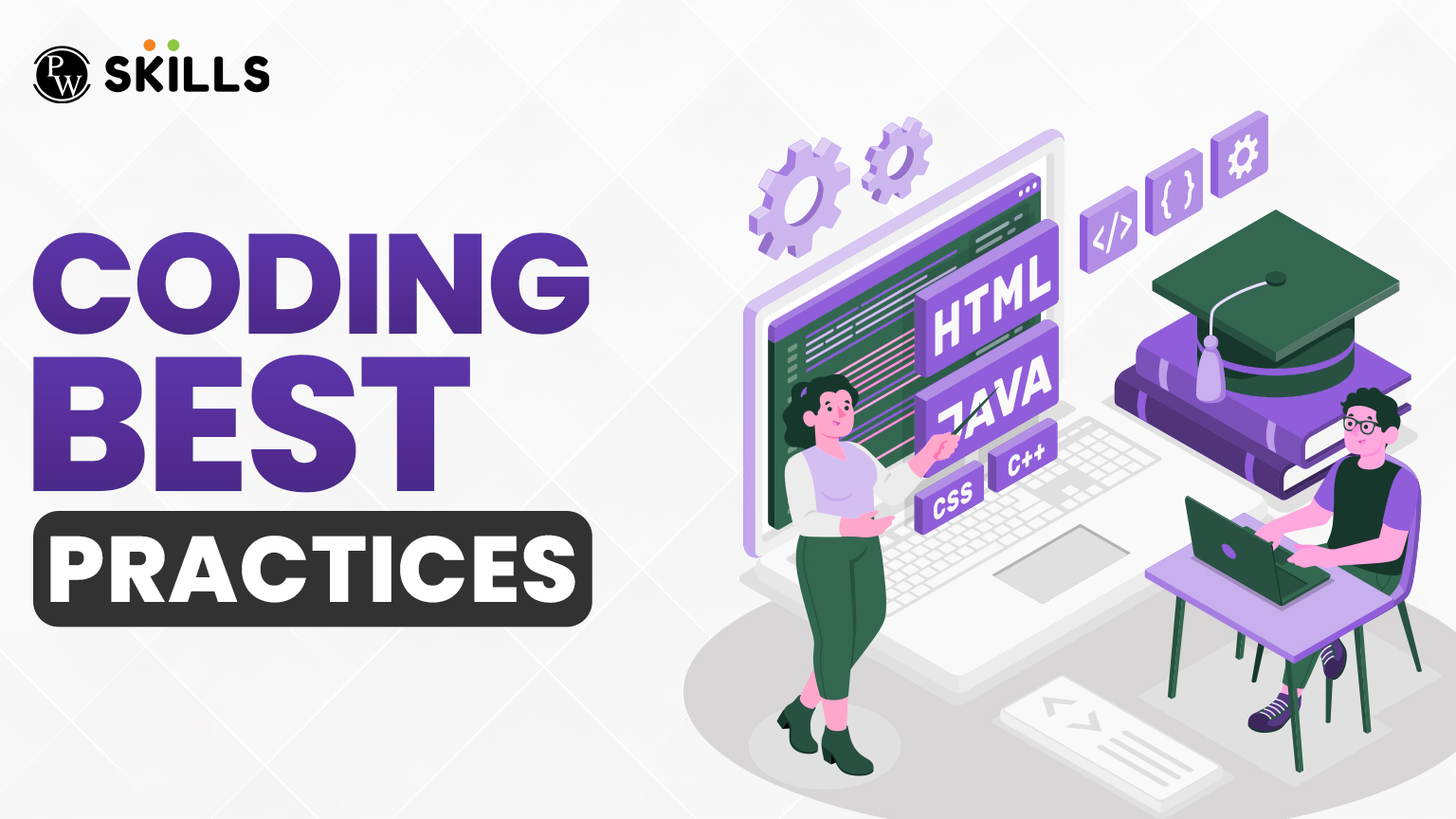Coding best practices can help you become a better programmer with a better understanding of code structure, logic, efficiency, and more. Creating better code requires following guidelines, proper logic, and structures. High performing software and applications are built through effective programming techniques.
It is important that you follow the coding guidelines and best practices to get the desired results. Let us know some of the coding best practices.
Why Coding Best Practices & Guidelines Matter?
When you follow coding best practices along with the recommended guidelines, you end up getting a reliable, maintainable, and scalable application. In software engineering, coding standards matter a lot as they impose a lot of impact on resource consumption, development pace, effective way of building a website or application.

When you adopt industry specific coding standards by writing clean and readable code, you end up getting a better end product. Codes that are written well are easy to maintain and interpret for developers as well as someone who is not from a technical background.
- Coding standards prompt you to follow consistent coding formats, ensuring good readability and maintenance.
- When you follow guidelines, your code becomes readable, which is easy to debug as well as suitable for collaboration.
- When you follow proper coding guidelines, the chances of error are significantly reduced.
- When you follow the coding best practices, the ease of scaling code becomes way easier.
- All maintenance tasks, such as debugging, code refactoring, and maintenance, become easier.
- Making code reviews and getting feedback becomes easier when your code follows the expected coding guidelines.
Read More: Which programming language is best for getting the job?
Coding Best Practices & Guidelines To Follow

There are many coding best practices that can be followed to ensure that the code is clear and maintainable. Let us learn more about some of these practices below.
1. Choose Industry Specific Coding Standards
Coding best practices depend on the type of industry your product or services belong to. These practices and guidelines will adjust or share some major differences accordingly.
Keep in mind that the best practices for an automobile company are different from those in the education industry. When you write industry-specific code, it becomes easier and more effective. You always have to make sure that your code is satisfied and meets end users’ requirements.
2. Code Readability Is Important
When code is readable, it depicts a positive impression in the minds of readers, making it easier to debug and maintain by any developer.
When code is readable, the team can quickly fix minor issues, identify logic, and make other important changes without investing a lot of time in locating the exact place. Clarity needs to be prioritized for a good development experience.
Read More: What is the Difference Between Coding and Programming?
3. Meaningful Names
A meaningful name of variables, functions, or classes can make things easy for whoever interacts with the application code. A well-chosen name reflects the purpose of the value it holds.
For example, when you use total_price instead of tp, then the former one i,e. “total_price”, makes things clear that it is something related to the price of some commodities.
Camel Case Vs Snake Case
The camel case and snake case naming conventions are two popular naming patterns. In camel case, we use capital letters to separate words in a variable, while in snake case, we use an underscore to do the same.
| let firstName = “Ankit Kumar”; // Camel case
first_name = “Ankit Kumar” //Snake Case |
4. Avoid a Single Variable For Multiple Work
A variable used in programming must be unique and not reused. If you try to reuse an already-assigned variable, it might lead to logical errors, unexpected behavior, confusion, and more.
Each variable must be unique with a well-defined purpose. When you keep the data unique, it helps maintain data integrity and makes debugging even easier. Let us show you this with a simple example below.
| data = 100 # storing a number
print(“Initial data:”, data) data = “Ankit” # reusing the same variable for a string print(“After reuse:”, data) |
Output
 |
At first, the value in the “data” variable was a number 100, but when you reuse the same variable to assign a string name, the initial value i,e. 100 will be lost forever, and in its place, the new name “Ankit” is stored.
5. Keep Adding Comments
Comments can make your code readable throughout. When you ensure good commenting, your code can be interpreted by other developers who might not have worked on the program initially. Commenting is a good practice to keep something, including certain logic, as a reminder.
Comments make your code clearer and understandable, whether it is a complex program or a simple one. Whitespace in a program can help you visually format your code. When you implant whitespace in your code in a planned way, you can easily scan through the code to find bugs or issues in the program. Let us do a quick comparison of a program with our without comments or whitespace.
Without Comment/Whitespace
| #include <stdio.h>
int main(){int a=5,b=10;int sum=a+b;printf(“Sum=%d”,sum);return 0;} |
With Comment/Whitespace
| #include <stdio.h>
int main() { int a = 5, b = 10; // Declare and initialize variables int sum = a + b; // Calculate sum printf(“Sum = %d”, sum); // Display result return 0; } |
You can clearly see program with comments and whitespace is clearer than the normal code in the above table.
6. Effective Code Review
Code review is one of the essential coding best practices to maintain quality programming for an application. When you make code reviewing a habit, you can easily catch bugs, improve performance, and ensure adherence to the coding standards.
7. Try to Normalise Using Exception Handling
The try and catch statements can be very useful in managing errors in programs without crashing the application in unforeseen events.
You can use a structured try, catch, or finally block to handle some of the predictable errors like invalid inputs, file not found, or network issues in the application.
8. Documentation Is Important
Documenting your code is important as you need to share your code with other teams in the organisation. The code is often circulated for review and use. Hence, it is important that the code is clear and well-documented.
Coding Best Practices Python

Let us check some of the coding best practices to follow with the Python programming language.
1. Follow Python Coding Guidelines
Make sure you abide by the guidelines of Python programming to write readable and recognisable code. The better your code is organised and structured, the better interpretation it delivers.
- You must be familiar with the principles of Python programming to structure your program in a better logical manner.
- Following the indentation property in Python is a must.
- Make sure your coding maximum length does not exceed 79 characters.
- Make sure you use autoframers to ensure code quality.
2. Logging In Python
You can leverage logging in Python to track events when your software application runs. This technique helps you perform development, debugging, running, and tracking the performance of critical operations. It is similar to the print function with the objective of providing tracking information that will be useful for developers.
3. Comment In Python Is Important
Comments are a very important part of programming, which help keep code readable and maintainable. Comments in code keep an explanation of a part of the code, which is very important for communicating with fellow developers and communities.
4. Python Docstring is the Best Practice
A docstring is a string that occurs as the first statement in a module, class, method definition, or function. The code documentation can be created automatically using the docstring. Docstrings are always kept between the double quotes (“ ”).
| def multiply(x, y):
“”” Return the addition of two numbers “”” result = x + y return result |
5. Virtual Environment Does the Work
When you are working on a dynamic project, you can keep a virtual environment to keep your working environment with libraries and versions of Python. This also helps the end users to install and manage their software applications and versions independently within the system.
| pip install virtualenv |
6. Follow Naming Convention
It is important to be aware of the Python naming convention for clean and optimised code. You can take guidelines and reference from PEP 8. Check a few naming guidelines for Python variables.
- Make sure to name packages and modules in lowercase
- UpperCaseCamelCase convention for class names in Python is one of the coding best practices.
- The instance variable name must be completely lowercase.
- Constant name needs to be kept in capital letters
- You can use non-public instance variables with a single underscore.
Keep these simple convention layouts in mind for frequently used identifiers in Python.
- Module: Lowercase
- Class: CapWords
- Methods: Lowercase
- Type Variables: CapWords
- Constants: UPPERCASE
- Package: lowercase
Coding Best Practices FAQs
Q1. What are coding best practices?
Ans: Coding best practices help you build a structured, well-optimised program. When you follow coding guidelines, syntax, and best practices, you can build a quality code project.
Q2. Is coding 2 hours a day enough?
Ans: You can practice 1-2 hours of coding on a daily basis, building your logic and solving competitive programming questions.
Q3. Is indentation important in Python programming?
Ans: Indentation is important in Python as it structures the program code into different blocks or sections.
Q4. Why follow coding best practices?
Ans: The best practices and guidelines in Python help you create a well optimised programming environment with your codes being easily reusable, structured, optimised, and suitable for faster debugging and fixes if needed.

